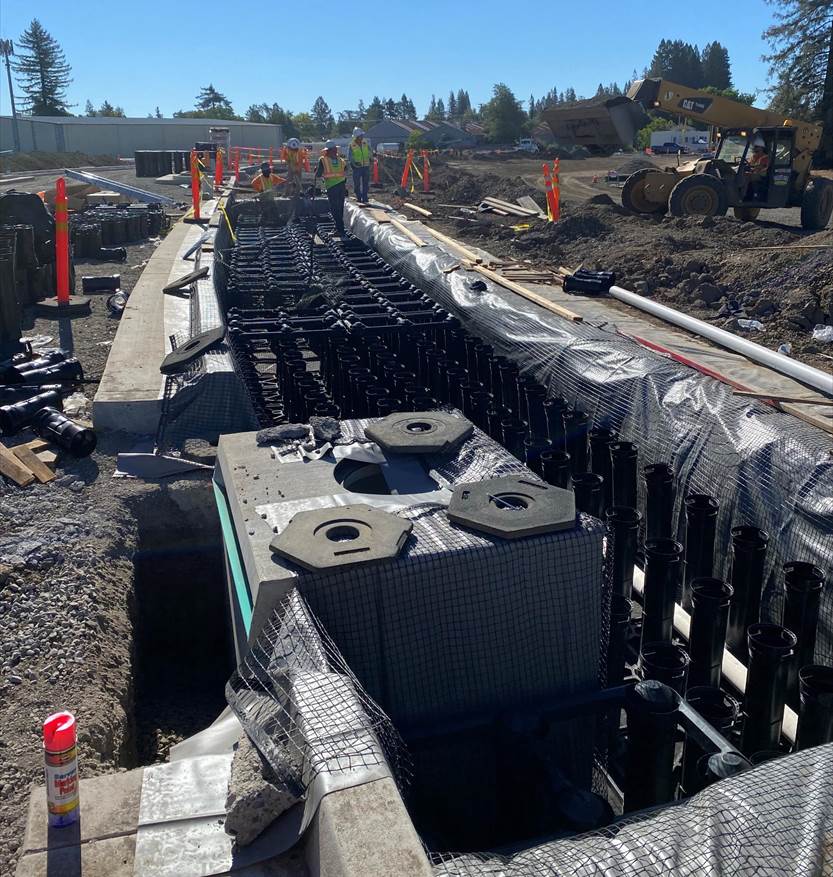When is a sidewalk more than just a sidewalk? When that sidewalk is one of those inside Mill District.
You can’t tell from the street, but the sidewalks of our project sit atop a state-of-the-art innovation designed to facilitate tree growth, minimize storm runoff, and recharge the water table in a way that allows for greater conservation of resources.
The innovation, dubbed Silva Cells, is a Best Management Practice for storm water management, and is considered one of the most eco-friendly development features available today.
Technically, Silva Cells represent something known as a modular suspended pavement system. Think of them as a series of chambers that sit between the ground and the sidewalk itself—an interstitial layer packed with different types of soil, gravel and rock that allows tree roots to grow and stores (and filters) water after weather events. The cells are separated from the sidewalk itself by columns that create the space for the filtration material to rest.
Crews were installing Silva Cells for the second part of September—a process that involved digging a deeper trench where sidewalks are supposed to be and lining the trench with cells that look like giant black shoeboxes.
No, the Silva Cells aren’t cheap, but Director of Development Eric Chan said the environmental benefits far outweigh the cost when it comes to this feature.
“Silva Cells allow for improved water quality as [they filter] water run-off before being drained into the storm water system,” Chan said. “One of the big reasons why we chose this system is because it also allows for the roots of the street trees to spread out; we spent a lot of time working through that detail to ensure that our street trees can grow to maturity without impacts to the sidewalks.”
Mill District didn’t dive into Silva Cells technology without guidance from a professional; Alan B. Cohen, a local architect, helped guide us through the process (who is in our Spotlight this month). Cohen had worked with Silva Cells on previous projects and is passionate about the benefits.
The way he sees it, this technology pays for itself in three main ways. First, it enables trees to grow. Next, it provides a place for runoff to go, minimizing the likelihood of flooding. Finally, it acts as a filter for storm water before it goes back into the ground and recharges the aquifer.
“Especially a time when water conservation is an issue, this is the smartest way to approach development,” said Cohen. “Silva Cells are a commitment to doing right by the environment.”
With the Silva Cells in place, our contracting crews will finish the sidewalks with “capping” and final paving by the end of the year. From that point on, at least to the naked eye, they’ll just look like regular sidewalks. Thankfully for us, they’re much, much more.
